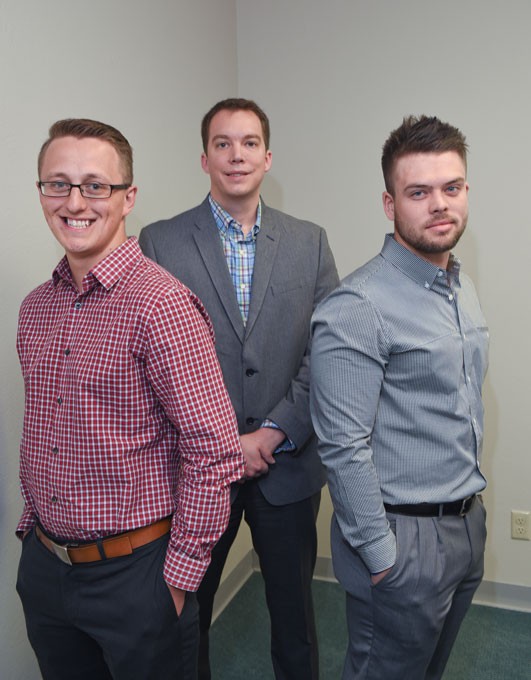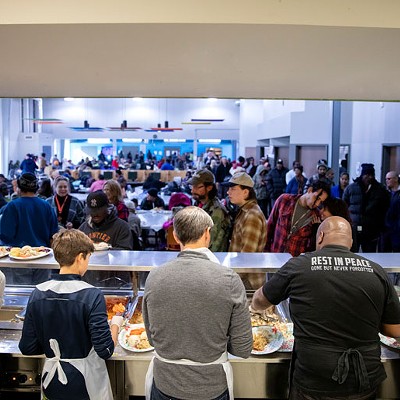Charity shopping
Supporting local makers of handcrafted products while also assisting area-based charities is the mission of Givitt, an online store.
“We started by putting together a network of local artists, makers and brands and putting their products on our site,” said Tristan Torres, a co-founder of Givitt, which launched last November. “We then give people the chance to pick the nonprofit they want to support with 10 percent of the purchase price.”
There are nearly 15 businesses and nonprofits to mix and match. For example, when Givitt (givitt.com) shoppers purchase an OKC-themed t-shirt from state-based Opolis Clothing Company, they also can choose to donate to local blind aid nonprofit NewView.
“You see cause-related marketing everywhere because people are saying, ‘That’s important to me,’” Torres said.
The nonprofits listed on Givitt say the donations and heightened community awareness make it a socially responsible and appealing platform to be part of.
“This is a great way to not only support local businesses, which is great in its own way, but also support really good nonprofits,” said Lindsey Harris with City Care, a local nonprofit that works with at-risk and impoverished families that is also included on the site.
Best OKC
Oklahoma City isn’t Portland, and that’s okay.
That was the message from Aaron Renn of the Manhattan Institute for Policy Research who was a keynote speaker at the Mayor’s Development Roundtable last week.
“You would be far better off being the best Oklahoma City you could be rather than the poor man’s Portland,” Renn said. “Places like [OKC] are now in the game for business and residents like you never were before.”
Renn remarked that second-tier cities like OKC, Nashville and Indianapolis compete with larger cities like Chicago and New York in new ways. While NYC is still America’s premier urban center, Renn said, new technology and the spread of specialty businesses has set the groundwork for places like OKC to offer high-quality urban lifestyles.
However, while Renn remarked on OKC’s recent success in downtown, he said challenges remain with continued development just outside the urban core.
A lack of sidewalks, transit infrastructure and medium density is a challenge in the urban neighborhoods outside of downtown Oklahoma City, Renn said.
Other points made by Renn:
>> OKC should consider ways to attract the 30- to 45-year-old demographic that is moving out of many cities. Renn said OKC can offer downtown amenities that are hard to find in larger cities.
>> Outer suburbs need attention, as they are not at the level of other cities.
>> “If your parks, your schools, your streets and your crime levels are terrible, that [cool downtown] stuff doesn’t matter,” said Renn, offering advice to keep close attention to aspects of urban life that can be overlooked in the quest for new stadiums and skyscrapers.
>> “Oklahoma City is just now starting to emerge as a great American city,” Renn said. “Your glory days are still ahead of you.”

Arts awareness
Julia Kirt said one of her missions at Oklahomans for the Arts (OFTA) is to promote the idea that art and culture should be accessible to everyone.
“I really felt like we showed that the arts are not partisan,” Kirt, OFTA’s executive director, said about this year’s Oklahoma Arts Day at the Capitol, held last week.
The day included speeches from both Republican and Democratic lawmakers, booths from arts and culture organizations and opportunities to meet with legislators about the importance of arts funding. Artists also performed May 5 in the Capitol rotunda, an aspect new to this year’s Capitol Day. State funding for the arts has decreased 26 percent since 2009, and Kirt said it is important to remind lawmakers how important arts and culture is, especially in education.
“They are going to have to make a decision on what they want to fund, but I feel like we’ve made a good case,” Kirt said.
With a handful of bills targeting arts funding and programs last year, Kirt said this legislative session only included one such bill that failed to move past committee. The arts community also celebrated the announcement that the Art in Public Places program will move under Oklahoma Arts Council (OAC).
“It’s a great program,” said Joel Gavin with OAC, who said more details about the reorganization would be announced in coming weeks.
Quotable
“For tonight, the takeaway for me was just hearing ideas and what was important to this particular community that I could not have even guessed. And had I not been here, I wouldn’t have known.”
Those were the thoughts of Joy Hofmeister, Oklahoma Superintendent of Public Instruction, after attending a forum this month hosted by the Douglass Mid-High School Parent Teacher Student Association.
Also in attendance were several lawmakers from northeast OKC, which has a large African-American population. Hofmeister spoke with a hospitable audience that was eager to share its frustrations regarding the public school system, particularly the state’s role in it.
Sen. Anastasia Pittman, Rep. Mike Shelton, Rep. George Young and former Sen. Connie Johnson also participated in the panel, along with school board member Ruth Veales. The Democratic lawmakers said a history of policies that have reduced African-Americans’ achievement, followed by a current state of unawareness, have created major problems in urban education.
“You may have 20 or 25 urban legislators [in the state Legislature],” Young said. “All the rest of them ... are ranchers and farmers. They don’t get what we go through.”
By the numbers
72. That’s the number of hours a woman will have to wait in Oklahoma before receiving an abortion.
Gov. Mary Fallin signed House Bill 1409 into law last week, which increases the time from 24 to 72 hours for voluntary and informed consent. The law also requires facilities that perform the procedure to add a web link from their websites to a state webpage called A Woman’s Right to Know.
“It will allow for more time to consider medical risks as well as explore alternatives to abortion, such as adoption,” Fallin said in a media statement.













